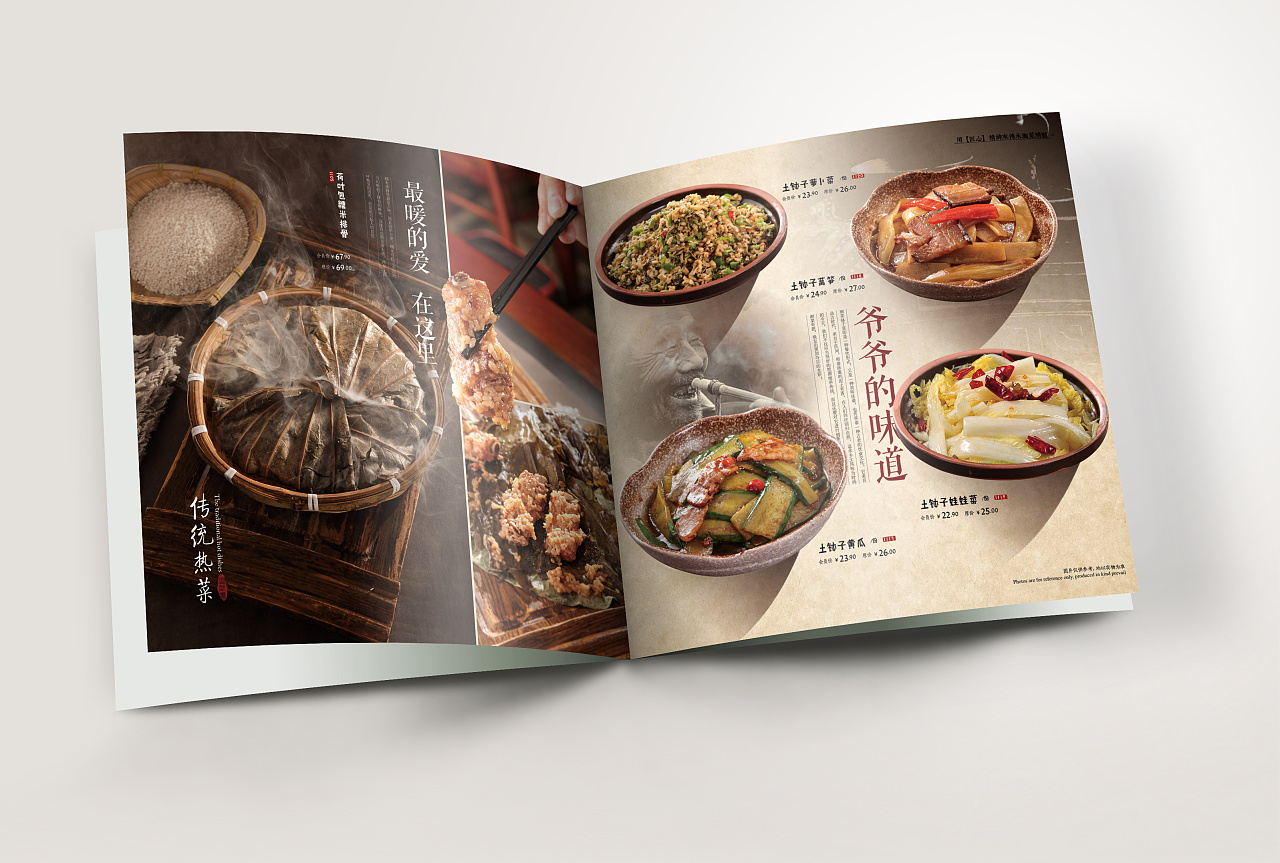| 本文英文原版转载自网络,由酒店英语小编翻译。
There's an art and science to menu engineering. Much of the art – designing restaurant menus for customer psychological factors – takes into account the number of menu pages, placement of items on the menu, whether or not to use dollar signs in menu pricing, etc. This blog post will focus on the science – using menu item profitability and popularity data to drive decision making with the objective of increasing profitability.
菜单工程是一门艺术和科学。许多艺术——根据顾客心理因素设计餐厅菜单——考虑了菜单页面的数量、菜单上项目的位置、菜单定价中是否使用货币符号等等。本文将关注科学——使用菜单项的盈利能力和流行度数据来驱动决策,以提高盈利能力。
什么是菜单工程 What is Menu Engineering?
Think of menu engineering as a marketing tool. Menu engineering is about maximizing profitability by promoting your most profitable menu items and encouraging customers to buy what you want them to buy.
把菜单工程看作一种营销工具。菜单工程是通过推广你最赚钱的菜单项目和鼓励客户购买你想让他们购买的东西来实现利润最大化。
Menu engineering focuses on two main elements: demand and margin contribution. Sales mix polling, brought in from your POS system, combined with recipes, built out with costing, integrates critical data about quantities sold compared to item margin. Menu engineering helps you determine whether menu items are overpriced or underpriced, whether you need to revise recipe portions or ingredients, and monitors menu performance. It allows you to make informed decisions about popularity versus profitability.
菜单工程关注两个主要元素:需求和利润贡献。销售组合投票,从您的POS系统带来,结合食谱,建立与成本计算,集成了关键的数据,销量与项目利润相比。菜单工程帮助您确定菜单项是否定价过高或过低,是否需要修改菜谱的部分或配料,并监控菜单性能。它可以让你做出关于受欢迎程度和盈利能力的明智决定。

Automating this process allows you to easily visualize popularity vs. profitability and gives you an accurate picture of each menu item』s margin contribution and sales success. Based on this data, you can seize menu opportunities, for example, promoting menu items that are high in margins, but low in sales. Applying these metrics to dashboards provides insights into menu opportunities, helping you determine what items to add or remove from your menu, what price increases and decreases are necessary, and where items should be placed on your menus. These dashboards provide an easy way to see detailed sales analysis and even to track individual server performance – an invaluable tool when training servers to suggestively sell highly profitable menu items.
通过自动执行此过程,您可以轻松地直观显示受欢迎程度与盈利能力,并准确显示每个菜单项的利润贡献和销售成功。根据这些数据,您可以抓住菜单机会,例如,推广利润率高但销量低的菜单项。将这些指标应用于仪表板可提供有关菜单机会的见解,帮助您确定要在菜单中添加或删除的项目,需要增加和降低哪些价格以及应在菜单上放置项目的位置。这些仪表板为查看详细的销售分析,甚至跟踪单个服务器的性能提供了一种简便的方法,这是培训服务器暗示性地销售高利润菜单项时的宝贵工具。
Menu Costing
The first step in the menu engineering process is menu costing, which refers to breaking down every item on your menu to its individual ingredients and determining exactly how much it costs to create each menu item. You must cost your menu to the penny because the menu engineering process depends heavily on the profitability level of each menu item.
菜单工程流程的第一步是菜单成本计算,它是指将菜单上的每一项分解为单独的成分,并确定创建每个菜单项的确切成本。你必须花费你的菜单一分钱,因为菜单工程的过程很大程度上取决于每个菜单项目的盈利水平。

If you do this process manually, start by listing all ingredients used in a specific menu item. Be sure to include items such as spices and cooking oil. Then calculate the cost of each ingredient in a specific dish based on the cost of the individual food items used to prepare it. For example, if one egg costs $.17 and you use three eggs in your avocado and mushroom omelet, the egg cost for the omelet dish is $.51. Repeat that step with the mushroom, avocado, seasonings, cooking oil, etc. to calculate the total costs of ingredients. Add the cost of purchasing those items (only the food cost percentage related to the food items in the omelet dish) to the cost of ingredients to arrive at the food cost for the avocado and mushroom omelet. Do not include labor costs in your menu item calculation.
如果您手动执行此过程,请首先列出特定菜单项中使用的所有成分。确保包括香料和食用油等物品。然后根据用于准备特定食物的单个食品的成本来计算特定菜肴中每种成分的成本。例如,如果一个鸡蛋的价格为$ .17,而您在鳄梨和蘑菇煎蛋卷中使用了三个鸡蛋,则煎蛋卷的鸡蛋成本为$ .51。用蘑菇,鳄梨,调味料,食用油等重复该步骤,以计算配料的总成本。将购买这些物品的成本(仅是与煎蛋卷中的食品相关的食品成本百分比)添加到配料成本中,即可得出鳄梨和蘑菇煎蛋卷的食品成本。菜单项计算中不要包括人工成本。
Beyond tracking usage, you must track yield from each food item to get an accurate cost on recipes. It』s especially important to track yield on food items used in multiple recipes. You need to know how much yield you got from each avocado, for example, and how much of that yield you used in your guacamole, your avocado and mushroom omelet, and your grilled chicken and avocado salad to determine the total cost of each of those three recipes. For example, if one avocado costs $.60 cents and each one yields five ounces, the avocado costs $.12 per ounce. If you use 2.5 ounces in your avocado and mushroom omelet, four ounces in your chicken and avocado salad, and 12 ounces in your guacamole, your costs for avocado per menu item are $.30, $.48 and $1.44, respectively.
除了跟踪用法之外,您还必须跟踪每种食品的产量,以获取准确的食谱成本。跟踪多种食谱中使用的食品的产量尤为重要。例如,您需要知道从每个鳄梨中获得多少产量,以及在鳄梨调味酱,鳄梨和蘑菇煎蛋卷以及烤鸡和鳄梨沙拉中使用了多少产量,才能确定每一个鳄梨的总成本三个食谱。例如,如果一个鳄梨的价格为$ 0.60美分,每一个鳄梨的价格为五盎司,那么鳄梨的价格为每盎司$ 0.12。如果您在鳄梨和蘑菇煎蛋卷中使用2.5盎司,在鸡肉和鳄梨沙拉中使用4盎司,在鳄梨调味酱中使用12盎司,则每个菜单项的鳄梨成本分别为$ .30,$。48和$ 1.44。
While many restaurants do menu costing manually, manual menu costing is error prone because it's difficult to maintain accuracy and consistency, especially if different people are involved in the process.
尽管许多餐厅都手动进行菜单成本核算,但是手动菜单成本核算容易出错,因为难以维持准确性和一致性,尤其是在过程中涉及不同人员的情况下。
Ideally, you』re automating your menu costing. Either your POS system calculates food cost and profit for specific menu items within the system, or the data is pulled into your restaurant accounting and inventory management system, which does the calculations for you. Your system should track usage and yield from each food item to get an accurate cost on recipes. Tracking your recipes』 food costs automatically also optimizes food item usage and reduces waste.
理想情况下,您可以自动执行菜单费用计算。您的POS系统可以计算系统内特定菜单项的食品成本和利润,或者将数据提取到您的餐厅会计和库存管理系统中,为您进行计算。您的系统应跟踪每种食品的用法和产量,以获取准确的食谱成本。自动跟踪食谱的食品成本还可以优化食品的使用量并减少浪费。
Update your recipe costing (the ingredient cost portion) every time there are price changes in food items from suppliers. If you』re using a restaurant-specific accounting and operations system that incorporates inventory management and menu engineering as part of the platform, the system automatically updates your recipe costing as food item costs change.
每当供应商提供的食品价格发生变化时,更新您的配方成本(成分成本部分)。如果您使用的餐厅特定的会计和操作系统将库存管理和菜单工程作为平台的一部分,则该系统会随着食品成本的变化自动更新您的食谱成本。
衡量受欢迎程度与盈利能力 Measuring Popularity vs. Profitability

Once you've determined an item's cost and price, evaluate a menu item's profitability based on the contribution margin. The contribution margin is the menu price minus the cost. Menu engineering then focuses on maximizing the average contribution margin of each guest's order.
确定项目的成本和价格后,根据贡献率评估菜单项目的获利能力。保证金是菜单价格减去成本。然后,菜单工程专注于最大程度地提高每位客人的订单的平均保证金。
Measuring popularity is easiest if you plot your menu items on a menu engineering matrix as seen to the right. (The Y axis shows the item』s popularity and the X axis shows the item』s profitability.) If you have advanced restaurant management software, the matrix is created automatically as part of the menu engineering process. Whether you create the matrix manually or your system does it for you, it will help you visualize profitability vs. popularity of your menu items, by placing them into four categories.
- Stars: popular and profitable
- Opportunities: popular, but unprofitable
- Puzzle: profitable, but unpopular
- Dog: unpopular and unprofitable
如果将菜单项绘制在菜单工程矩阵上(如右图所示),则最容易衡量人气。 (Y轴显示该商品的受欢迎程度,X轴显示该商品的获利能力。)如果您使用高级餐厅管理软件,则在菜单工程过程中会自动创建矩阵。无论您是手动创建矩阵还是系统为您创建矩阵,它都可以通过将菜单项划分为四个类别来帮助您可视化其利润率与菜单项的受欢迎程度。
明星:受欢迎且有利可图
机会:受欢迎,但无利可图
难题:有利可图,但不受欢迎
狗:不受欢迎且无利可图
制定数据驱动的菜单决策 Making Data-driven Menu Decisions
Now that you』ve identified your profit drivers and your poor-performing menu items, it』s time to use this information to increase profits. Using restaurant-specific accounting and operations software facilitates the decision-making process, but if you』re trying menu engineering on your own, here are some general guidelines:
现在,您已经确定了利润驱动因素和效果不佳的菜单项,是时候使用此信息来增加利润了。使用餐厅专用的会计和运营软件可以简化决策过程,但是,如果您要自己尝试菜单工程,请参考以下一般准则:
Stars
You』ll want to not only keep these popular and profitable items but feature them prominently on your menu. Maintain the exact specifications of the item and do not change the quality of the product to increase its profitability because you might also decrease its popularity. However, you can test increasing profitability by raising the price slightly. Also have servers suggest these star items. Train them on suggestive selling to increase customer demand for these popular and profitable menu items.
您不仅要保留这些受欢迎且有利可图的商品,还要在菜单上突出显示它们。保持产品的确切规格,并且不要更改产品质量以增加其获利能力,因为这也可能会降低其受欢迎程度。但是,您可以通过稍微提高价格来测试增加的盈利能力。也有服务器建议这些星级项目。对他们进行暗示性销售培训,以增加客户对这些受欢迎且有利可图的菜单项的需求。
Opportunities
If a menu item is popular but not profitable, you want to increase the contribution margin without reducing its popularity. This requires careful and gradual price increases. If the item is popular because of its high value, it may still be perceived by customers as a good value after a slight price increase. Also consider reducing the cost of the accompaniments or decreasing the portion size to increase the contribution margin.
如果菜单项很受欢迎但没有利润,那么您希望增加边际收益而不降低其受欢迎程度。这需要谨慎且逐步的提价。如果该商品因其高价值而受到欢迎,则在价格略微上涨后,仍可能被客户视为具有很高的价值。还应考虑减少伴奏的成本或减小部分大小以增加贡献余量。
Puzzles
Items that are profitable, but not popular with customers are often a puzzle. Because of the high margin contribution, you want to sell these items, but your challenge is encouraging customers to buy them. You can create demand for these items by repositioning them on the menu or training servers to suggestively sell them. You might also consider decreasing the price slightly to increase the popularity of these menu items, while maintaining their profitability.
有利可图但在客户中不受欢迎的商品通常是一个难题。由于利润率很高,您想出售这些物品,但是您面临的挑战是鼓励客户购买它们。您可以通过在菜单或培训服务器上重新放置它们的方式来暗示性地出售这些物品,从而满足这些物品的需求。您也可以考虑略微降低价格,以提高这些菜单项的受欢迎程度,同时保持其盈利能力。
Dogs
Menu items that are not popular or profitable are obvious candidates for the chopping block. Exceptions might be items that provide opportunities to use leftovers and also have low labor costs associated with their preparation. Then you'll most likely want to keep these items on the menu. Otherwise, give up these dogs.
不受欢迎或不赚钱的菜单项显然是砧板的候选者。可能是例外情况,这些项目提供了使用剩菜的机会,并且与准备工作相关的人工成本较低。然后,您很可能希望将这些项目保留在菜单上。否则,就放弃它们。
Conclusion
As a restaurant owner/operator you need to make calculated decisions about whether to keep or remove dishes; whether to raise or lower a menu item』s price, change portion sizes or ingredients; and how to identify profitable items to increase sales of those dishes.
作为餐馆老板/经营者,您需要对是否保留或取出菜肴做出周密的决定;是否提高或降低菜单项的价格,更改份量或成分;以及如何确定有利可图的商品来增加这些菜的销量。
With menu engineering, you immediately identify 「dead weight」 on your menu and learn how the profit contribution of each menu item affects your bottom line. You also discover how to eliminate across-the-board price increases while learning how to strategically increase prices with little or no customer resistance.
使用菜单工程,您可以立即在菜单上识别出``净重'',并了解每个菜单项的利润贡献如何影响您的底线。您还将发现如何消除全面的价格上涨,同时学习如何在很少或没有客户阻力的情况下策略性地提高价格。
Menu engineering will not only help you understand the profit contribution for each of your menu items, it also provides you with an invaluable tool for analyzing your restaurant』s product mix and how it affects your profitability.
菜单工程不仅可以帮助您了解每个菜单项的利润贡献,还可以为您提供宝贵的工具,用于分析餐厅的产品组合及其对利润的影响。
If you』d like to learn more about how to automate the menu engineering process, visit the Restaurant365 website. Restaurant365 incorporates restaurant accounting software and restaurant operations software into an all-in-one, cloud-based platform that includes menu engineering and inventory management as part of the solution.
如果您想进一步了解如何自动执行菜单工程流程,请访问Restaurant365网站。Restaurant365将餐厅会计软件和餐厅运营软件集成到一个基于云的多合一平台中,该平台包括菜单工程和库存管理作为解决方案的一部分。
For more tips on running a profitable restaurant business, read our Wechat: Hotel-English
有关经营盈利餐馆业务的更多技巧,请关注我们的微信公众号:酒店英语(Hotel-English)。

 酒店英语
酒店英语



